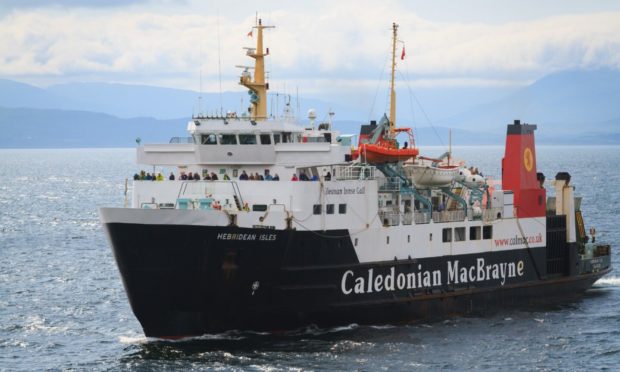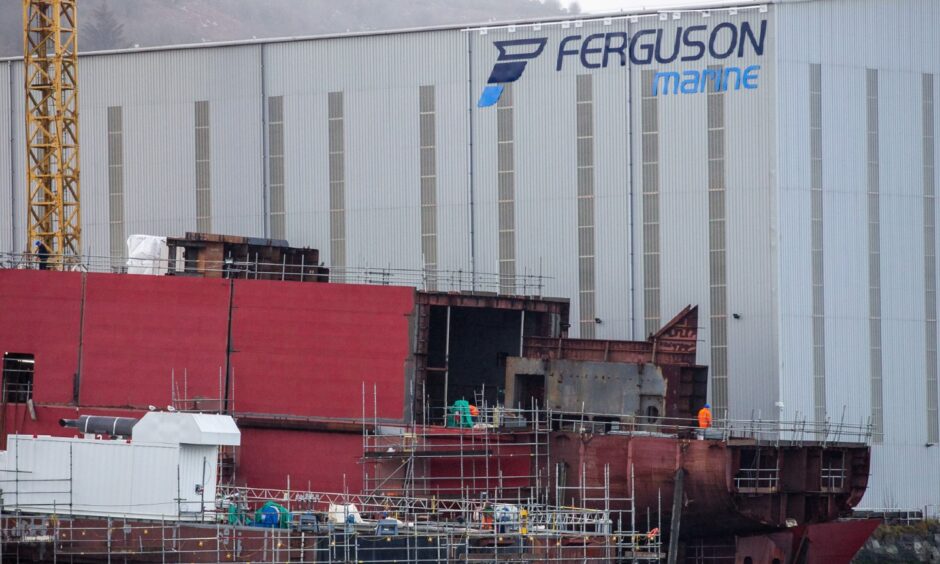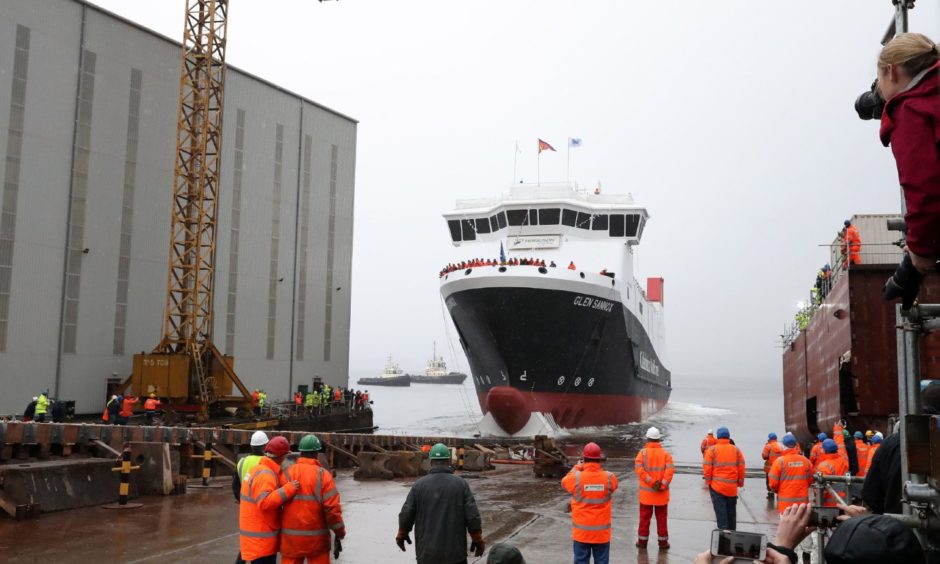The Scottish Government has been accused of “catastrophic failures” after it was revealed two new ferries for Islay will not be built in Scotland.
More than 30 organisations expressed an interest in taking on the contract and 11 entered submissions, including the government-owned Ferguson shipyard.
However, only four companies, one from Romania, one in Poland and two in Turkey, have reached the final stage of the procurement process, with the final contract due to be awarded before March next year.
The Scottish Government took Ferguson Marine in Port Glasgow into public ownership in 2019 to avoid its collapse, but uncovered a number of failures in the construction of two ferries.
The announcement that two new vessels will be built overseas prompted fierce criticism from opposition parties and unions, who described it as a “hammer blow to Scotland’s shipbuilders”.
‘Catastrophic failures’
Scottish Labour transport spokesperson Neil Bibby said the decision “demonstrates the SNP’s complete lack of an industrial strategy”.
He added: “Catastrophic failures in the Scottish Government’s procurement of two new ferries are at the heart of the Ferguson’s ferry debacle.
“Ministers should take personal responsibility for turning things around and filling Ferguson’s order books with work that can transform the ferry network and support good, skilled, local jobs.
“Scotland’s shipbuilders are being left on the shelf while more public money goes into the coffers of foreign businesses.”
Scottish Conservative shadow transport minister Graham Simpson said it is “humiliating for the SNP that ships which could be built in the west coast of Scotland are instead going to be welded together in Eastern Europe”.
He added: “Ferguson shipyard was nationalised to much fanfare by the SNP but their catastrophic failures have left the yard unable to compete for work on their own doorstep.”
Alba MP Kenny MacAskill – whose party members voted at their first conference last weekend to support the direct awarding of any future ferries to Ferguson Marine – said the decision was a “kick in the teeth” to workers at the Port Glasgow yard.
‘Fight tooth and nail’
The anger has also been felt by the unions who described the move as “further evidence of the lack of an industrial strategy for Scotland”.
STUC General Secretary Roz Foyer said: “Lifeline ferries sailing in Scottish waters need to be built in Scotland.
“We know that workers at Ferguson’s and their union the GMB will fight tooth and nail to secure future work for the yard and we will do all that we can to support them.”
GMB Scotland organiser Gary Cook claimed the “commercial shipbuilding sector is mirroring the failure of our offshore wind sector”.
He added: “This is the price communities pay for political failure, in over two decades of devolution Scotland still does not have an industrial plan that properly invests in jobs and infrastructure.”
‘Interest from shipyards across the world’
Jim Anderson, director of vessels at Caledonian Maritime Assets Limited (CMAL), which procures vessels for CalMac, said: “We received interest from many shipyards across the world, and carried out robust assessment of their technical and financial suitability to take on this project.
“Four shipyards scored the highest across both criteria and have now been issued an ITT for the contract. This stage of the procurement process will take around six months, and we hope to award the contract to the winning shipyard at the end of March 2022.
“The ITT stage marks an important step forward in bringing a new vessel to Islay and Jura.
“It is one of several new vessel and harbour upgrade projects we are currently progressing to improve the resilience of ferry services for island communities.”
Ferguson Marine told the BBC it had put forward a “robust bid” for the new order but it respected CMAL’s decision.
A spokesperson added: “We believe there is a significant opportunity for contracts and business growth in the build of complex vessels in the 40 to 100m range, which includes offshore patrol vessels and service operation vessels.
“We are actively pursuing opportunities of this nature, which exist in Scotland and around the world, and we remain highly focused on completion of the dual fuel ferry project, which is a top priority.”
‘Disappointing’
A Scottish Government spokeswoman said: “While it is disappointing that Ferguson Marine have been unsuccessful on this occasion, we are fully committed to supporting the yard to secure a sustainable future, including a pipeline of future work, to help protect jobs and commercial shipbuilding on the Clyde.
“The Scottish Government stands firm on our commitment to the vessels, the workforce and the yard at Ferguson.”



